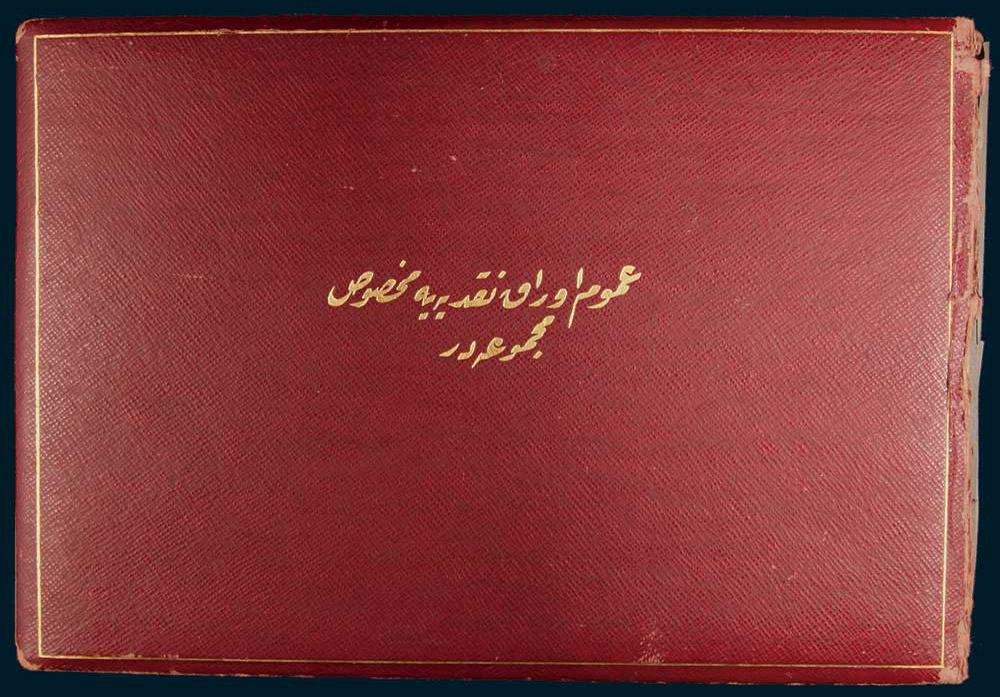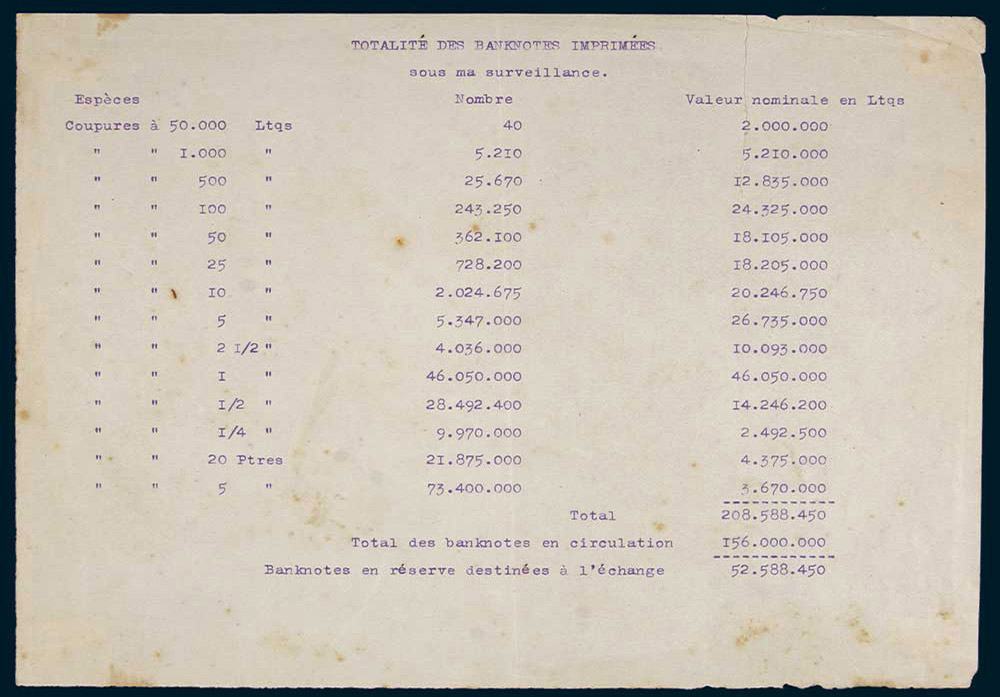- Selection Required: Select product options above before making new offer.
- Error: There was an error sending your offer, please try again. If this problem persists, please contact us.
Original album circa 1918
In 2016 a hitherto unknown collection of specimen notes of the late Ottoman Empire surfaced in Australia, a hundred years after their issue. This important collection had remained secreted in a family's possession for three generations – but exactly how and when the notes arrived in Australia remains a conundrum, especially as Turkish migration to Australia was restricted by a post-war ban which was enforced until the 1930s.
In total 144 banknotes were found housed in a contemporary presentation album with a gilt title in Ottoman Turkish which roughly translated to “the collection of specimen notes of all notes of the State Ministry of Finance”.
At the back of the album was a contemporaneous typed list headed the “totality of banknotes printed under my supervision”, confirming that they were once the property of a highly-placed Government official whose tabulations reveal for the first time the definitive numbers of all denominations of war-era Ottoman notes that were printed for circulation. Research continues into the identity of that official but on the available evidence it could easily be deduced that this collection of specimens was compiled by Huseyin Cahid the Vice-President of the Ottoman Parliament, as it mirrors the circulation issues that bear his signature. Cahid was a vehement nationalist who vetted the proposed new banknotes very closely, and so it is likely that he kept a reference collection of specimens for this purpose. He falsely accused another parliamentarian, Voskan Martikaian, the head of the Post – Telegraph Service, of conspiring to include secret Armenian codes in their designs.
According to the list, the numbers of notes printed for circulation were: 50,000 livres – 40; 1,000 livres – 5,210; 500 livres – 25,670; 100 livres – 243,250; 50 livres – 362,100; 25 livres – 728,200; 10 livres – 2,024,675; 5 livres – 5,347,000; 2-1/2 livres – 4,036,000; 1 livre – 46,050,000; 1/2 livre – 28,492,400; 1/4 livre – 9,970,000; 20 piastres – 21,875,000; 5 piastres – 73,400,000. Giving a total of 208,588,450 livres printed and showing 156,000,000 in circulation with 52,588,450 in reserve.
The 50,000 Livre of AH1332 (1916) is the key note in the collection and was the highest value note of its time being the equivalent of fifty-thousand 100 Kurush gold coins with an actual gold weight of 10,570 Troy ounces. Gold traded in 1916 for around USD 21.00 per ounce and so a 50,000 Livre note with a denominated value of almost USD 222,000 would have represented a Sultan's ransom. At today's levels with gold trading at around USD 1,500 per ounce, the note would have held a modern day equivalent gold value of almost USD 16,000,000.
The list reveals that only forty of the 50,000 Livre notes were ever printed, and such is its extreme rarity, that today only a few specimens survive. Similarly the small numbers printed of the 1,000 Livre (5,210) and the 500 Livre (25,670) and their continual heavy use up until the first notes of the new Republic replaced them in December, 1927, accounts for the poor state of surviving circulated notes. In many instances the high grade specimen notes on offer are the only complete examples of a denomination or type that are known to exist outside of institutional collections. Importantly the collection also contains a number of possibly unique colour trials which were never adopted for circulation.
Only from this collection of lightly-cancelled specimen notes can the full vibrant colour and the intricate calligraphy of the war-era Ottoman notes be revealed.



